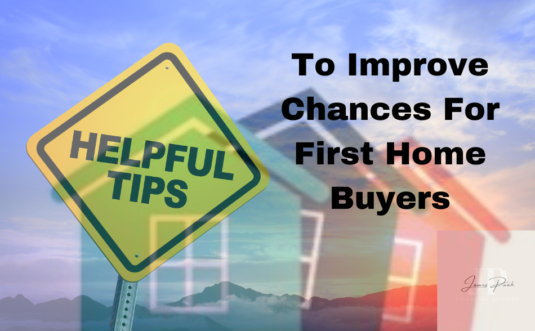If you intend to buy your first home using the Kāinga Ora low deposit First Home Loan scheme then you need to be aware of the eligibility and the maintenance clause that they have – Kāinga Ora require that any maintenance on the property cost less than $10,000 to repair and you need to both be in the financial position and to make the repairs within 6 months of the purchase.
In many respects it’s quite a sensible clause because if you have a low deposit, then you probably cannot afford any huge repair costs, especially in the first year or two of owning your home.
What is a little unclear to many people is what triggers this clause.
What Is The Kāinga Ora Maintenance Clause?
We’ve heard that a lot of people believe that every property purchased using the Kāinga Ora First Home Loan scheme needs to have a building report done.
Then if any issues are identified in the report then those issues need to be quoted to ensure that they fit under the $10,000 expense cap.
Plus those repairs need to be completed within 6-months of purchasing the home, and once the repairs are done they then need to be confirmed back to the lender who advises Kāinga Ora.
While you need to expect this might be the case, we would stress the word ‘might‘ as it is not always the case.
Understanding The Process
Generally the process when you’re purchasing your first home and using the Kāinga Ora First Home Loan scheme is:
- you would want to find the best mortgage adviser – You can message me, I can help make sense of your mortgage.
- the mortgage adviser would arrange to get you pre-approved as a purchaser before you go shopping for the property
- the pre-approval is likely to have no mention of the requirement for the building report
- but – your mortgage adviser should highlight the potential requirement for a building report
- when you identify a property the mortgage adviser and lender will check the property listing and draft sale and purchase agreement
- if you then proceed a valuation will be ordered, and once complete the mortgage adviser and lender will review the report
- if the report (valuation) highlights any potential issues a building report will be required
- if the building report then identifies any repairs needed then you will need to get quotes for those repairs
- the quotes need to be for less than $10,000 and you (the purchaser) need to be able to demonstrate that you can afford to have the repairs completed
- the repairs need to be completed within 6-months of the settlement date (the purchase) and proof provided to the lender who will update Kāinga Ora
Now we say that the building report may be required because it does depend a lot on the property, any clauses within the sale and purchase agreement, and anything identified within the valuation.
Let’s Look At How This Works…
It’s always good to know what the lenders and the people at Kāinga Ora are looking at, so lets step through this in a bit more detail.
When you identify a property that you want to purchase as your first home, it’s most likely listed on a real estate website. The lender will almost certainly look at the listing and in their opinion see whether there’s anything likely to need repairs. If they think there is something then they may then request a building report.
When you’re dealing with the real estate agent and preparing the sale and purchase agreement, the standard agreement has the ability for you to require a building report and many real estate agents, solicitors, and mortgage advisers would say it’s prudent to get a building report on any new house purchase. What that means is it’s quite likely that the requirement for a building report will be a clause within the agreement.
When the lender sees that the clause (requirement) is in the agreement (after they’ve been supplied a copy) they will request a copy of that building report. This is assuming that you will be getting one which is not always the case.
One of the other requirements when purchasing your first home through the Kāinga Ora’s First Time Loans scheme is for a valuation on the property. Valuations are generally requested by banks when there’s less than 20% deposit or if it’s a private sale. Given you will be using the Kāinga Ora’s low deposit First Home Loans it’s almost certain that you would need the valuation.
When the lender is supplied a copy of the valuation they will not only be looking at the value on the property, but they will be looking at the commentary around the condition of the property. If there’s anything in the report questioning the condition of the property, then a building report will be a requirement.
In some cases, we’ve seen small issues that can be readily fixed and actually cost less than what it would cost for a building report; however, the banks are very consistent on requiring a building report should there be any identifiable problem. We do always push back if it is very minor, or should the vendor (seller) say they will fix the issues before settlement.
In Summary:
So in summary, you will need a building report if (a) the property listing identifies anything that concerns the lender or (b) if the sale and purchase agreement has a clause requiring a building report or (c) if the valuation highlights anything that would make the lender want a building report.
When you get the building report for Kāinga Ora (the First Home Loans scheme) you need to also ensure that you can get quotes to rectify any issues highlighted.
If it’s very small issues then you may be able to identify those as something that you can repair yourself, but if it’s anything of significance then you will need to get a quote to have those repairs done.
A good mortgage adviser will help you work through all of this and be there to answer questions and offer advice.
It’s Best Working With An Experienced Mortgage Adviser
As a mortgage adviser that do a lot of First Home Loans in this manner I would discuss and explain this to you in advance.
Of course I do know that there are people who will deal with the bank directly or with inexperienced mortgage advisers and often this is not explained to them.
If you’re looking for a mortgage adviser to help you with getting your loan approved and all the nitty gritty that comes with it, then I am well placed to provide this advice. I am part of the team with a lot of experience with first home buyers and with the various lenders that can provide the Kāinga Ora’s First Home Loans and other options if you’re not eligible for that. We do have low deposit options with both banks and non-banks plus we have the shared home ownership options as well.
Most of all, when you deal with me, you can get all the advice for free.
Assuming the lending is arranged with a bank, then the bank pays my commission and it costs you nothing to get the advice. Of course, even if you have spoken to your bank directly, you may want to reach out to me and I will still provide advice so that you can be sure that you’re getting the best options and not getting sprung with any surprises on the way through.


